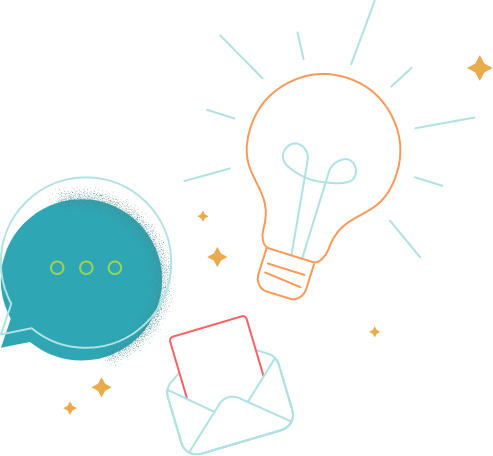You just clicked on a headline. Did a human write it — or an AI tool? In 2025, that’s not a rhetorical question anymore. These days, algorithms offer a catchy headline for anything from your next blog post to the social media post announcing updates to your landing pages. And if you want, they’ll even translate it from English to Spanish while they’re at it.
But before we hand over the crown to an AI headline generator, marketers need to ask: Are these tools trustworthy? Effective? Can they draft a compelling title that’s also aligned with your brand voice?
This post explores how search engine optimization and engagement will shape your tech choices, how AI-powered tools arrive at that generated headline and when it makes sense to bring one into your tech stack.
The Role of Headline Copywriting in Digital Marketing
Headlines have always been the handshake between content and its audience. In digital marketing campaigns, we’ve seen a slight shift away from inspiration and craft toward technical factors making the “perfect headline” measurable:
- Standalone impact: Unlike a catchy title in a print magazine, digital headlines often appear out of context in search results, newsletters or social feeds. Translation: They need to deliver value on their own.
- Speed and clarity: Online audiences skim documents — fast. A headline has seconds to establish relevance and credibility to encourage a click.
- SEO and AI signals: Search engines and AI crawlers read headlines first, making keyword inclusion critical.
Subscribe to the ai marketer
Weekly updates on all things ai in marketing.
Styles of Headlines
Different contexts, brand identities and target audiences call for different approaches, but here are some of the most common headline styles you’ll see out in the field:
- Instructional and explanatory:
- Example: “How to Write an About Us Page Like a Pro.”
- These promise solutions, introductions to a topic, tutorials or core definitions.
- News and direct response:
- Example: “Google’s March 2025 Core Update: What You Need To Know.”
- Concise and fact-driven, these provide context to help readers understand the latest industry updates.
- Listicles:
- Example: “Where’s the Traffic? 7 Referral Strategies That Will Work in 2026.”
- Scannable and expectation‑setting by showing through examples rather than just telling top-level facts or statements.
- Testimonial or inspirational:
- Example: “How We Improved EOS’s PPC Performance.”
- Social proof at work, interviews with industry experts, case studies — this is where you back up your broader marketing claims.
- Confrontational and clickbait:
- Example: “Will AI Really Replace SEO? Let’s Discuss.”
- Challenges assumptions and teases information, either by putting a spin on trending conversations and broadly accepted notions or by leaving out one key data point (“… Then This Happened”).
Every brand gravitates to a different mix. The Associated Press, for instance, favors precision. That means they’ll often give readers the core information right in the headline. So no clickbait here, but it also means their headlines can lean toward the longer end of the spectrum. Here are two examples to give you a sense.
- Selena Gomez marries Benny Blanco: ‘My wife in real life’: This is as short as it gets — core players + action, maybe paired with a quote.
- British department store Harrods warns customers that some personal details taken in data breach: At 96 characters, this is already fairly long, but you’ll notice that it’s equally matter-of-fact, and that even readers who didn’t know Harrods before can walk away with one core insight without even reading the article. That’s the idea.
The New York Times leans toward explanatory and instructional titles, but that certainly doesn’t mean their style is standard by any means. While you can find SEO-optimized formats like “The Best Pajamas,” some articles are way more playful and weave in either a bit of clickbait or quirky imagery to put a smile on readers’ faces:
- We Tried 25 Different Kinds of Mayonnaise and Lived to Tell.
- Phones Used to Be Fun. These Accessories Recapture That Magic.
- I Was a Yogurt Goldilocks. Then I Discovered the Floral Flavors of La Fermière.
It’s worth pointing out, though, that they won’t always use the full-length variant everywhere on the site, so you may just see “The Best Mayonnaise” in your AMP preview and the playful version above in the editorialized version.
BuzzFeed thrives on curiosity gaps and listicles. So if you want to play around with clickbait (hopefully in an ethical way) and you have never read one of their posts, well … they’ll likely write one about the moment right after you did.
As long as you make a conscious choice, picking a headline style or template isn’t a matter of right or wrong. Yes, some research shows that each negative word in a headline can boost CTR by 2.3%, but if you’ve developed a quirky brand story based on dad humor, developing a doom-and-gloom headline strategy just won’t match. Having a good sense of the styles you want to use repeatedly certainly helps during the next steps, though.
So, How Exactly Does a Headline Generator Work?
Forget mad libs-style templates. Today’s AI headline writers build on large language models (LLMs) trained on millions of headline/article pairs. Here’s what’s under the hood:
- Summarization core: Models like BART and T5 learn to condense long articles into concise, factual headlines. Many other platforms and AI applications today do the same thing as part of their production workflows. The challenge for any model always lies in identifying the core argument and not getting distracted by some minor argument while condensing 3,000 words into one headline.
- Style control: Just a few years ago, researchers first tried to separate style from content in projects like TitleStylist, allowing the same story to be rendered as clickbait, neutral news or even humorous. Seemingly trivial for us mortals, but it goes to show that AI struggles with headline writing more than other tasks, and while models have evolved, it’s important to keep this in mind, depending on the styles you chose earlier.
- Personalization: Some frameworks decouple general generation from personalization, layering in reader history or preference embeddings while keeping facts intact. While it’s not practical to do this as a brand just yet, organizations should observe these trends, as they’ll certainly keep shaping user expectations.
- Corpus influence: My references are influenced by the first GameBoy, German comedians such as Dirk Bach and the Nirvana CDs my brother gave me. Whether comforting or not, at least in this respect AI models are similar to us. The data input shapes the output. A BuzzFeed‑heavy dataset will produce different results than an AP‑style one.
Are They Effective?
AI headlines do check some key boxes:
- Curiosity and emotion: They’re good at creating urgency or tapping biases. Less formal or more playful styles may require more oversight to ensure stylistic consistency without neglecting facts.
- Clarity: Sequence‑to‑sequence summarization ensures most outputs are understandable, but you may find that your team needs to rework some headlines to get just the right fact woven into their headline to make it clickworthy.
- Trust issues: A 2025 study found that informative AI‑generated headlines were rated most trustworthy by over half of respondents. But clickbait — whether human or machine‑made — was widely viewed as manipulative.
The verdict: AI can mimic patterns well, but quality and alignment with brand voice depend heavily on human oversight or your team’s editorial and technical setup. But before we go out investing in yet another toy, let’s discuss why you should consider it in the first place.
Benefits of Using an AI Title Generator
Yes, speed is a baseline benefit of any AI writer, but serious marketers should look deeper:
- Efficiency: Instantly produce dozens of options for A/B testing, either based on follow-up prompts or brief-guided workflows already accounting for variants.
- Fact‑aware summarization: Reduce the risk of misleading clickbait by checking whether the data points in your headline actually show up in the article. Certainly, your marketing team can do this, but some AI platforms have dedicated features and workflows to achieve the same.
- Stylistic agility: Many platforms allow uploading brand briefs or editorial guidelines to keep your headlines in a consistent format and reduce editing time.
- Optimization: Tools like CoSchedule score headlines on balance, sentiment and SEO potential.
- Consistency: Again, brand briefs can help keep tone uniform across blogs, newsletters and product pages — assuming your platform supports brand brief features or your team is willing to make them part of every prompt.
- Market adaptation: Your perfect tool may not exist yet, or you may hesitate to use it. Combining AI speed with human editors can help you refine nuance while your team is already learning the ropes.
When To Invest in a Dedicated Headline Generator Tool
Most likely, you’ll have noticed that a lot of benefits rely on the right team and setup. You may already have detailed production workflows, templates and playbooks in place. Maybe your marketers insist on a more hands-on approach to guarantee blog titles blend AP’s fact-based approach with McSweeney’s wit. Ultimately, every department looks different, so suggesting one ideal solution won’t do you any good (although some top-level tips apply across the board).
General LLMs (like ChatGPT) can generate solid headlines, but specialized tools are worth the investment when:
- Volume is high. Think newsrooms, e‑commerce or agencies publishing daily.
- Brand voice matters. This usually applies to enterprises with strict tone guidelines.
- Data‑driven teams. Marketers, I didn’t forget you. You want measurable CTR and SEO improvements.
- Global scale. Keeping headlines consistent even within one language is already tough. For some brands, multilingual functionality and personalization can make AI worth considering.
If you find yourself in one of these scenarios, here are some tools your team can use to streamline content production without neglecting the finicky details of headline copywriting.
Leading AI Headline Tools for Your Next Attention-Grabbing Article
First off, when we say “leading,” we don’t mean there’s one that’s perfect for everybody. Just like bubblegum, AI headline tools come in different flavors, and depending on your team’s capabilities, title preferences or workflows, you may prefer one over another.
contentmarketing.ai
AI built on Brafton’s editorial expertise; uses brand guidelines, audience personas and SEO data to generate headlines and content; provides ideation, creation and optimization workflows. Beyond the Target Keyphrase Headline Ideation workflow, the platform offers related workflows for news-based ideation, supporting content ideation, target audience shifts, copy refinement, with new features being added all the time.
CoSchedule Headline Studio
As one of just two options on the list that focuses exclusively on headlines, CoSchedule scores and analyzes headlines based on NLP metrics (word balance, sentiment, clarity, reading grade, headline type and SEO keywords); suggests improvements and synonyms; real-time scoring improves CTR.
Hypotenuse AI
Trained on high-conversion titles and professional copywriting; strong e-com angle; generates multiple headline options given a topic and keywords; supports SEO in multiple languages.
Jasper AI
Allows teams to upload style guides and knowledge bases to train a brand-specific voice; provides headline templates for different channels; includes campaign asset generation.
Copy.ai
Offers various headline formulas and templates; allows users to specify keywords, tone and style; integrates with WordPress and Drupal; supports multi-category content generation. Dedicated tools for blog vs. LinkedIn title generation.
Grammarly Headline Generator
Lets users select topic, content type and tone to produce tailored headlines quickly; free to use and integrates with the Grammarly ecosystem.
Final Word: Trust, But Verify
AI headline writers are powerful accelerators, but they’re not autopilot. The best results come when:
- AI handles speed, variety and optimization.
- Humans handle voice, nuance and judgment.
If your content strategy depends on making the right first impression — and whose doesn’t? — then AI headline tools are worth exploring. Just don’t forget the golden rule: a headline is only as strong as the content it introduces.






